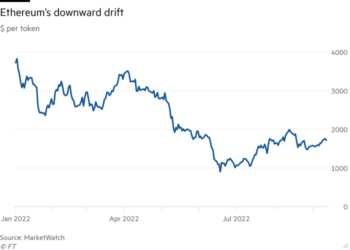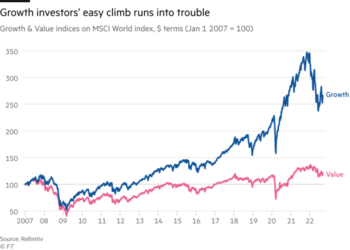Apple on Tuesday announced the launch of a high-end desktop computer that would leverage its successful homegrown M1 chips, as it pushes to seize greater market share in PCs following its split from Intel two years ago.
The Mac Studio, starting at $1,999, is akin to a pro version of Mac Mini and connects to an external monitor. It comes as Apple looks to gain an iPhone-like market share in the desktop segment following the success of the M1 chip, the company’s first desktop processor.
Apple’s market share among global desktop shipments was just 2.3 per cent last year, whereas in smartphones it had a 16.7 per cent share, second only to Samsung, according to research group Gartner.
Tim Cook, Apple’s chief executive, said: “Every quarter since we started shipping M1-based Macs has been record-breaking and we’ve outpaced the industry growth during this time.”
The Mac Studio equipped with the M1 Max processor starts at $1,999, while a version with the M1 Ultra — an enhanced processor also unveiled at the event — starts at $3,999. A customer upgrading the Ultra version to 128GB of memory and 8TB of storage would pay $7,999, a price that does not include a screen.
Some consumers will “doubtless be outraged” by these price tags, said Ben Wood, analyst at CCS Insight. “But the reality is that the pricing is more than affordable for post-production houses in the film and music industries,” he added, noting that these would likely be among the biggest customers.
“It’s a rounding error compared to the price of a high-end production-grade camera,” he said.
Intel used to make chips for all of Apple’s desktops, but in 2020 the iPhone maker began designing its own processors as it sought to further integrate its hardware and software.
Apple also announced the revamped the iPhone SE, first released in 2016 and refreshed in 2020. The move was widely expected since the company’s product portfolio had lacked an entry-level 5G model to compete with sub-$300 5G Android phones.
The number of phones equipped with 5G has ballooned from 16.7mn devices in 2019 to 539mn in 2021, according to Gartner.
Apple’s entry-level phone represents a pricing balancing act. With a starting price of $429, it is intended to lure Android users without cannibalising potential buyers of higher-margin iPhones.
The new iPhone SE features Apple’s A15 Bionic chip — the flagship processor used in the iPhone 13 — but it unlocks with Touch ID, rather than a face scan, its 12 megapixel back camera has just a single lens, and the screen is smaller.
Carolina Milanesi, analyst at Creative Strategies, said the company was succeeding in segmenting the market. “You give customers choice and they do not have to look over the fence to see what is available on the Android side,” she said.











